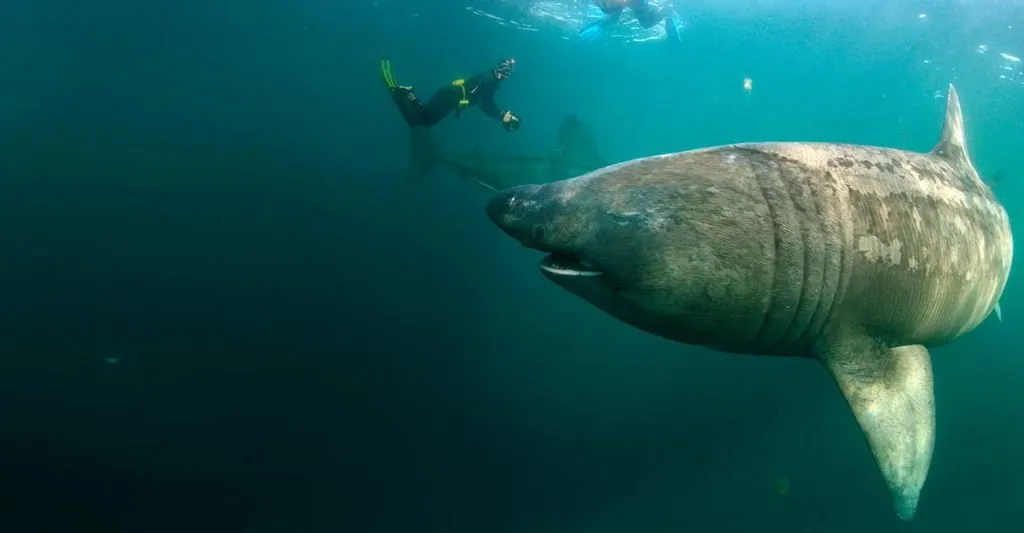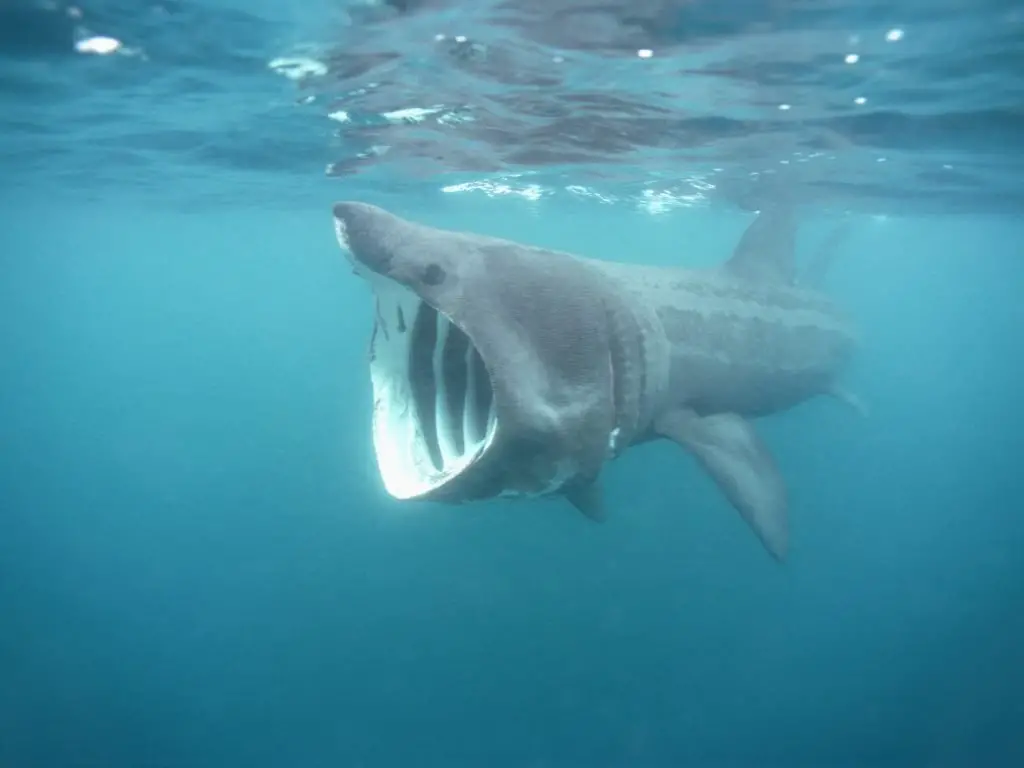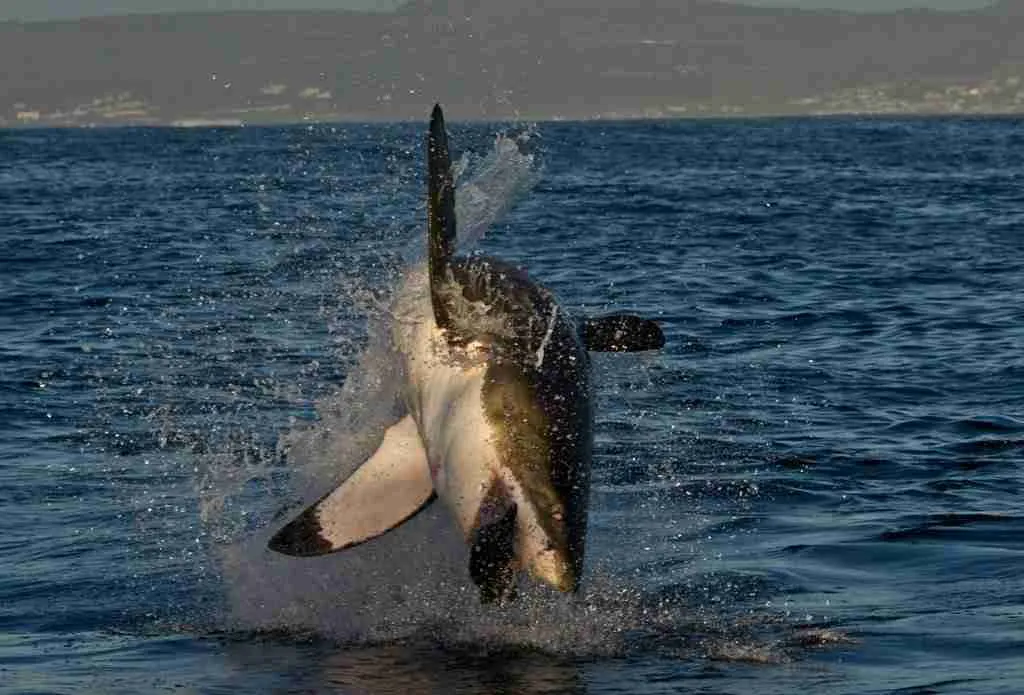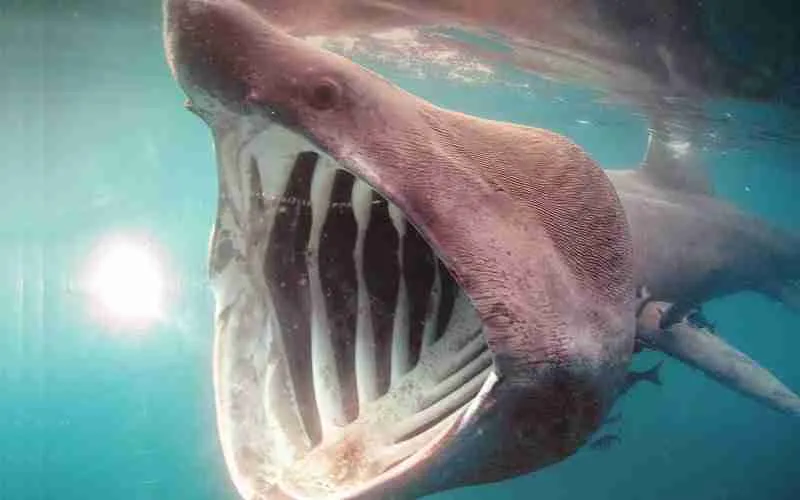As an Amazon Associate I earn from qualifying purchases.
Do you know what does basking shark eat? These creatures are the second largest sharks in the world and can be found in oceans all over the globe. Basking sharks are filter feeders, meaning that they eat mainly plankton.
In this blog post, we will explore why these sharks eat plankton and how long barking sharks live. Stay tuned for more fascinating facts about these amazing creatures!
What do basking sharks eat?
Basking sharks are filter feeders, meaning they strain tiny food particles from the water. The primary food source for basking sharks is plankton. Plankton is a group of small, floating organisms, including algae, bacteria, and microscopic animals. These creatures are an essential part of the marine food web and provide a food source for many animals, including basking sharks.

Basking sharks consume plankton by swimming with their mouths open. This way, they filter water and plankton through their gills. These sharks do not have teeth, so they cannot chew their food. Instead, they rely on the small spines in their gills to trap the plankton. Once the plankton is trapped, it is transported to the basking shark’s stomach, where it is digested.
Basking sharks usually eat plankton that is less than 1 millimeter in size. This type of plankton is called microplankton. Basking sharks eat other small organisms, such as krill and squid. However, their diet consists mainly of micro-plankton.
Why do basking sharks eat plankton?
Basking sharks eat plankton because it is a readily available food source. Plankton is abundant in the ocean and provides a nutritious meal for these filter-feeding sharks. Basking sharks also consume large quantities of plankton because they have a slow metabolism. This means that they require less food than other animals of their size.
How long does a basking shark live?
Basking sharks have a lifespan of up to 50 years. However, the average life expectancy for these sharks is 30 years. Basking sharks reach sexual maturity at 10-12 years old. Once they reach sexual maturity, they can reproduce every 2-3 years.

Basking sharks are slow-growing animals. Females grow faster than males and reach 12 meters (40 feet). Males typically grow to a length of 9 meters (30 feet). The largest basking shark was 14 meters (46 feet) long.
Where do basking sharks live?
Basking sharks live in oceans all over the globe. They mostly exist in temperate waters, such as the coasts of Europe and North America. However, they also live in tropical and subtropical waters. In some areas, basking sharks are seasonally migratory, moving to warmer waters in the winter and cooler waters in the summer.
Are basking sharks dangerous?
Basking sharks are not dangerous to humans. However, they are large animals and can pose a threat if startled or provoked. It is important to give these sharks space and avoid touching or harassing them.

Can basking sharks eat fish?
No, basking sharks cannot eat fish. These animals are filter feeders and lack the teeth necessary to chew and digest fish.
Why do basking sharks only eat plankton?
Basking sharks are filter feeders and strain tiny food particles from the water. The main food source for basking sharks is plankton. Plankton is a group of small, floating organisms, including algae, bacteria, and microscopic animals. These creatures are an important part of the marine food web and provide a food source for many animals, including basking sharks.
Can you pet a basking shark?
No, you should not pet a basking shark. These animals are wild animals and can be dangerous if startled or provoked. It is important to give these sharks space and avoid touching or harassing them.

What do baby basking sharks eat?
Baby basking sharks eat the same thing as adult basking sharks: plankton. Plankton is a group of small, floating organisms, including algae, bacteria, and microscopic animals. These creatures are an important part of the marine food web and provide a food source for many animals, including basking sharks.
Baby basking sharks filter plankton from the water using their gills. They do not have teeth, so they cannot chew their food. Baby basking sharks grow quickly and can start filter-feeding shortly after birth.
How do basking sharks eat plankton?
Basking sharks eat plankton by filter feeding. These animals swim with their mouths open, allowing water (and plankton) to pass through their gills. Basking sharks have long gill rakers that trap plankton in their mouths. The sharks then expel the water and swallow the plankton. This process is repeated several times per minute.
Do basking sharks have teeth?
No, basking sharks do not have teeth. These animals are filter feeders and strain tiny food particles from the water. They do not need teeth to eat their food. Basking sharks also lack a swim bladder, so they cannot float in the water. Instead, they must constantly swim to stay afloat.

What is the biggest basking shark ever recorded?
The largest basking shark recorded was 14 meters (46 feet) long. This animal was found in the waters off the coast of Scotland. Basking sharks are typically 9-12 meters (30-40 feet) long. Females are typically larger than males.
How long do basking sharks live?
Basking sharks can live for up to 50 years in the wild. These animals are slow-growing and reach sexual maturity at 9–12. Once they reach sexual maturity, they can reproduce every 2-3 years.
What is the scientific name for a basking shark?
The scientific name for a basking shark is Cetorhinus maximus. This name comes from the Greek words Cetus, meaning “whale,” and rhinos, meaning “nose.” The word “Maximus” means “largest.”

What is the conservation status of basking sharks?
Basking sharks are classified as “vulnerable” by the International Union for the Conservation of Nature (IUCN). This means they are at risk of becoming endangered shortly. The main threat to these animals is fishing.
Basking sharks are often accidentally caught in fishing nets and killed. They are also hunted for their fins used to make shark fin soup. Basking sharks are protected from hunting and fishing in some parts of the world.
Are basking sharks rare?
Yes, basking sharks are considered rare. These animals are not well-studied, but it is estimated that only a few thousand are left in the wild. Basking sharks are classified as “vulnerable” by the International Union for the Conservation of Nature (IUCN). This means they are at risk of becoming endangered shortly.
Can a basking shark close its mouth?
Yes, a basking shark can close its mouth. These animals are filter feeders and strain tiny food particles from the water. They do not need to close their mouths to eat their food. However, they can close their mouths if they want to.

When do basking sharks mate?
Basking sharks typically mate in late spring or early summer. These animals are slow-growing and reach sexual maturity at 9–12. Once they reach sexual maturity, they can reproduce every 2-3 years.
What is the gestation period for a basking shark?
The gestation period for a basking shark is about 12 months. Female basking sharks give birth to live young. Baby basking sharks are born fully developed and measure about 1 meter (3 feet) long.
Where do basking sharks live?
Basking sharks are found in temperate waters all over the world. These animals prefer to live in coastal waters near the shore. However, they have been known to travel far out to sea. Basking sharks are filter feeders and eat plankton by straining it from the water.
Phytoplankton is a tiny plant or animal that drifts in the ocean. These animals have long gill rakers that trap plankton in their mouths. The sharks then expel the water and swallow the plankton. This process is repeated several times per minute.

Interesting facts about basking sharks:
- Basking sharks do not have teeth. These animals are filter feeders and strain tiny food particles from the water. They do not need teeth to eat their food.
- They also lack a swim bladder, so they cannot float in the water. Instead, they must constantly swim to keep afloat.
- The largest basking shark recorded was 14 meters (46 feet) long. This animal was found in the waters off the coast of Scotland.
- They are typically 9–12 meters (30–40 feet) long. Females are typically larger than males.
- Basking sharks can live for up to 50 years in the wild. These animals are slow-growing and reach sexual maturity at 9–12. Once they reach sexual maturity, they can reproduce every 2-3 years.
- They are classified as “vulnerable” by the International Union for the Conservation of Nature (IUCN). This means they are at risk of becoming endangered shortly. The main threat to these animals is fishing. Basking sharks are often accidentally caught in fishing nets and killed. They are also hunted for their fins used to make shark fin soup. Basking sharks are protected from hunting and fishing in some parts of the world.
- The gestation period for a basking shark is about 12 months. Female basking sharks give birth to live young. Baby basking sharks are born fully developed and measure about 1 meter (3 feet) long.

Conclusion
In conclusion, basking sharks are filter feeders that eat plankton. These animals are found in temperate waters all over the world. Basking sharks are slow-growing and can live for up to 50 years in the wild. The main threat to these animals is fishing. Basking sharks are often accidentally caught in fishing nets and killed.
You may also need:
Amazon and the Amazon logo are trademarks of Amazon.com, Inc, or its affiliates.

